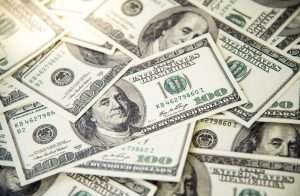
The dollar steadied on Wednesday, supported by its safe-haven status, as the world braced one of the biggest economic contractions for decades.
It gained against the yen, pound, euro, Swiss franc, New Zealand and Australian dollars as the market lost appetite for cash due to the liquidity measures imposed by the U.S. Federal Reserve.
The Australian dollar slid 0.2%, at $0.6123 while the New Zealand dollar slipped 0.3%, at $0.5945. The euro dipped 0.3%, at 1.1010 against the dollar.
The dollar gained 0.2%, at 107.74 against the yen.
On Tuesday, the Federal Reserve allowed central banks to replace their holdings in the U.S. Treasury securities for overnight dollar loans, giving them access to more dollars amid the crisis.
The dollar was a touch higher against emerging market currencies. It steadied at 7.0810 against the yuan and firmed 0.3%, at 1.2381 against the pound.
The dollar index stood at 99.028.
Elsewhere, factory activity in South Korea and Japan reported their largest contractions in almost a decade. In the U.S., private employment data is expected to report a decline in payrolls.
The newly discovered virus, COVID-19, has infected over 851,000 in 205 countries and has a death toll of 42,000.
Goldman Sachs reported its GDP forecast in the United States to fall by as much as 34%, compared to an initial estimate of 24%.